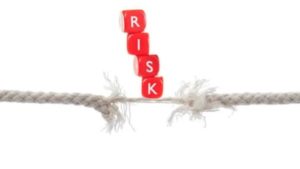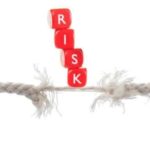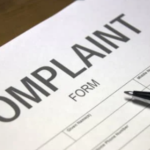Deafening noise from machines, magnetic fields, infection by bacteria, repetitive movements, exposure to a toxic pollutant, permanent pressure: these are all common scenarios in a worker's life. What are the families of hazards? What is the difference between risk and danger in a company? How can an organization better manage occupational health and safety risks?
Risk management and danger: two fundamental concepts for all companies
Company risks and labor law for good working and employment conditions
The priority of the managers of a company is their responsibility within the organization towards their employees: health and safety at work (labor code and public health code). Thus, the legal texts oblige the company manager to identify the different risks in his company within the framework of the ERM management of (controlled) risks in companies.
Risks or OHS dangers: what is the difference?
The hazard conditions the risk:
- the risk is defined as the occurrence of a possible damage according to the level of exposure to a danger (threat or DGI imminent serious danger) ;
- the danger is a source of harmful effect, damage or harm. A hazard therefore becomes a risk or a threat depending on the severity.
For example, a wet surface constitutes a danger, because the employee exposes himself to a fall which is the risk; the handling of substances (without protection) constitutes as much a risk, the agent as the viruses or the bacteria form the danger.
In a company, the following types of risk are listed:
- slips, falls
- handling (manual and assisted)
- infections, contamination
- exposure to chemical properties
- exposure to the properties of various physical agents
- emotional load, atypical schedules.
OHS risks are created by the company's activity and interactions within the work premises.
For a methodical identification, there are 6 typologies of hazards:
- Physical Hazards #1
- Safety hazards #2
- Biological Hazards #3
- Chemical Hazards #4
- Ergonomic Hazards #5
- Psychosocial Hazards #6.
When to do the hazard identification ?

There are several phases of hazard identification that must be well supervised and coordinated by those in charge:
- taking on a job or performing a task; before (examining surroundings, following procedures, and checking equipment), during (being aware of abnormal conditions or sudden emissions and changes)
- job design or new procedure implementation (purchase and installation of new machines, new process in the value chain)
- inspection, internal supervisory control, occupational health and safety commissions
- after an incident (analysis of the health services report and measures taken by the committee in charge or the person in charge of safety (employer for SMEs and VSEs).
A good identification of the dangers in the company answers to 3 main different criteria:
Dialogue (with the workers, the first concerned by the work and its dangers)
Examination (all aspects of the work, physical environment, equipment, materials and products used, work execution procedure, phases of the life cycle, risks for visitors or the public, injury and incident reports)
Consideration (operational procedure of tasks, possibility of modifying or removing the safety device on a machine, equipment or product voluntarily or involuntarily, organization of work with shifts at home or on other sites, pregnant women, young or inexperienced workers, disabled persons)
Everything you need to know about occupational health hazard families and risk management
Table summarizing the main hazards in the workplace
| Hazard families | Explanation of risks |
| Physical hazard | - related to the physical health and safety of employees (radiation, magnetic fields, without PPE, slipping, noise, extreme temperatures, pressure, contagion of viruses or bacteria on the job) - related to exposure (chemical and biological); bacteria, viruses, insects, plants, other humans and animals, physical, chemical and toxic properties of a substance or chemical product and its reactions - related to comfort and hardship (ergonomics of workstations, repetitive motions, inadequate position) |
| Psychological hazard | - psychosocial (pressure from the superior, permanent bad stress, physical and moral harassment, discrimination and inequality of gender or opportunities) These are risks to health and to job security (recruitment, promotion, sanctions, dismissal, salaries) - related to the violation of personal data confidentiality (digital risks and cybercrime) |
What is a a Serious and Imminent Danger at Work?
A Serious and Imminent Danger at Work (or Serious and Immediate Danger) is a category used to alert on the important dysfunction of a safety installation: fire fighting, gas leak, electricity short-circuit, etc. Its reporting must be linked to a diagnosis that appears in the risk assessment document.
A serious danger is one that causes a fatal accident or an illness leading to incapacity; an imminent danger is one where exposure leads to an accident or an occupational illness within a very short time.
Risk assessment: for a good management in companies
A periodic evaluation campaign by order of severity and recurrence of risks must be initiated by the managers of each company.
| What materials could I come into contact with? flammable liquid chemical substances and products gas corrosive material electrical conductor water (boiling), steam | In what type of environment am I? high electrical intensity large temperature difference (stifling heat, extreme cold) with ionizing radiation (X-rays, ultraviolet rays) lack of oxygen lack of light | Which product do I handle? blinding product or substance harmful to the eyes strong biological contamination explosive and flammable material corrosive and irritating products |
| What material or equipment could hit me? vehicles, forklifts, overhead cranes (any rolling object) solid body splinters, sparks (any thrown object) equipment above and equipment that falls | Where could I fall from? roofs, ladders, tanks, sills, mobile structures, trees, cliffs | How can I overexert myself? (heavy loads) carrying, lifting, pulling or pushing repetitive movements |
| What objects or equipment could I hit or bump? sharp edges chains, belts, cablesfixed objectsprotruding objectsuneven edges | What could I slip or trip on? wet hazard surfaceoily hazard surfaceicy hazard surfaceobstacles (on the floor, on stairs) | What protective equipment is regularly missing? hard hatanti-spray suit or gownshoes or boots (anti-slip, anti-static) vest |
Good risk management requires clear identification of risks and the implementation of strategies to deal with them. The objective is to reduce, avoid or eliminate the danger.
Enterprise risk management: methods for identifying and resolving risks according to the hazard
An ERM approach, or enterprise risk management, consists of actions and reflections on the methodical identification of risks arising from activities and the evaluation of the probability of an event occurring. The ERM policy of a company must allow to raise all questions about the occurrence of these events for a better understanding of the risks. The ERM response method chosen for each risk is thus included in the various monitoring and control systems for the effectiveness of the preventive actions and corrective measures of the approach (accept, transfer, reduce, eliminate the risk).
Once the risks have been identified, the company can adopt one of the following four ERM approaches:
| Eliminate the risk Why? To deal with the most serious and likely hazards How? Stop all hazardous activities. | Reduce the risk Why? If it cannot be avoided, the risk (and damage) is reduced How? Take measures to reduce either the probability or the severity. |
| Accepting the risk Why? When the cost of disposal is too high, or for sufficiently unlikely and minor risks. How? Monitoring and control are required when managers identify a number of risks. Remedial or corrective actions are developed when the event becomes effective. | Transferring the risk Why? If a risk can neither be avoided nor mitigated, then the business leader must share the risk with the stakeholders directly involved. How can this be done? For example, by taking out an insurance policy, but also by outsourcing the activity. |
However, the company manager may apply one of three risk prevention actions:
I. primary and priority action to intervene as soon as possible on the risk factors to eliminate or reduce them ;
II. secondary and follow-up action, to monitor the risks and the state of health of the employees
III. tertiary and monitoring action to limit the consequences, in favor of job retention
Prevention of occupational risks: actions of an employee
The manager is not the only one responsible for the good management of risks in his company: concerting and taking concrete measures are the responsibility of all employees.
Each employee who suspects a risk or a danger must ask his or her supervisor (or a member of the company's health and safety committee) for information. The supervisor should be able to learn more about the hazards associated with the new job:
- associated precautions (check directions for use, product labels and safety data sheets)
- Standard operating procedures (posters or instructions, symbols and other warnings)
- Safe work procedures and processes (instructions and guidelines).
Health and Safety Risk Management to Compliance Management
From ERM to GRC: the HSE methodology
Beyond the updating of the occupational risk assessment document, the form of responsibility of a company manager concerns all information, prevention and training actions towards its employees.
A voluntary program of compliance of the companies in front of the dangers and for the protection of the individuals is the priority. It includes a control plan that describes the testing procedures, with for example an automated program to search for errors.
Now the ERM (Enterprise Risk Management) approach is reinforced by the new GRC (Governance, Risk and Compliance) orientation. The compliance approach built with GRC solutions results in a thorough analysis of risk factors, supported by targeted risk information related to regulations.
The implementation of a GRC prevention and safety policy (compliance) helps to avoid sanctions for non-compliance with the law, but also to meet the requirements of occupational health and safety standards.
The ILO, the international labor organization, has initiated general good practice guides on employee participation and consultation with employee representative structures to improve occupational health: this is the objective of ILO/OHS 2001, for example.
The objective of the Canadian standard CSA Z1002 Occupational Health and Safety is to enable managers to eliminate dangerous phenomena after identification in order to control the risk. This is also the case for the British standard BS OHSAS 18001, which is now taken over by the international standard ISO 45001 (equivalent reference).
About the international standard ISO 45001 health and safety at work
The continuous improvement of the performance and life of an organization is based on three managerial systems associated with 3 standards:
- ISO 9001 (quality QMS) ;
- ISO 14001 (environment EMS) ;
- ISO 45001 (SMSST, safety and health at work).
Nowadays, ISO 45001 (published on March 14, 2018) is the reference standard for the management of safety and health in the workplace for all organizations on the planet. Its reference standard impels a preventive approach with safe and healthy workplaces to strengthen the protection of workers (current trend of telecommuting).
This preventive approach to occupational risks targets the appearance of trauma and pathologies, and encourages the participation and consultation of workers in the development of occupational health and safety policy. The ISO 45001 standard coupled with the SMSST management allows :
- to create better and safer working conditions
- to improve the safety of its employees and to reduce the risks.
The specialized firm Extrend Consulting in Madagascar can help each organization with a methodological support and an expert animation for the implementation of a management system of safety and health at work. We will manage for you the steering committee or any project team designated by the CEO.
We have the skills available to guide you through the new ISO 45001 standard:
Step 1: Risk assessment
Step 2: Objectives and priorities
Step 3: Action plan
Step 4: Progress evaluation.





